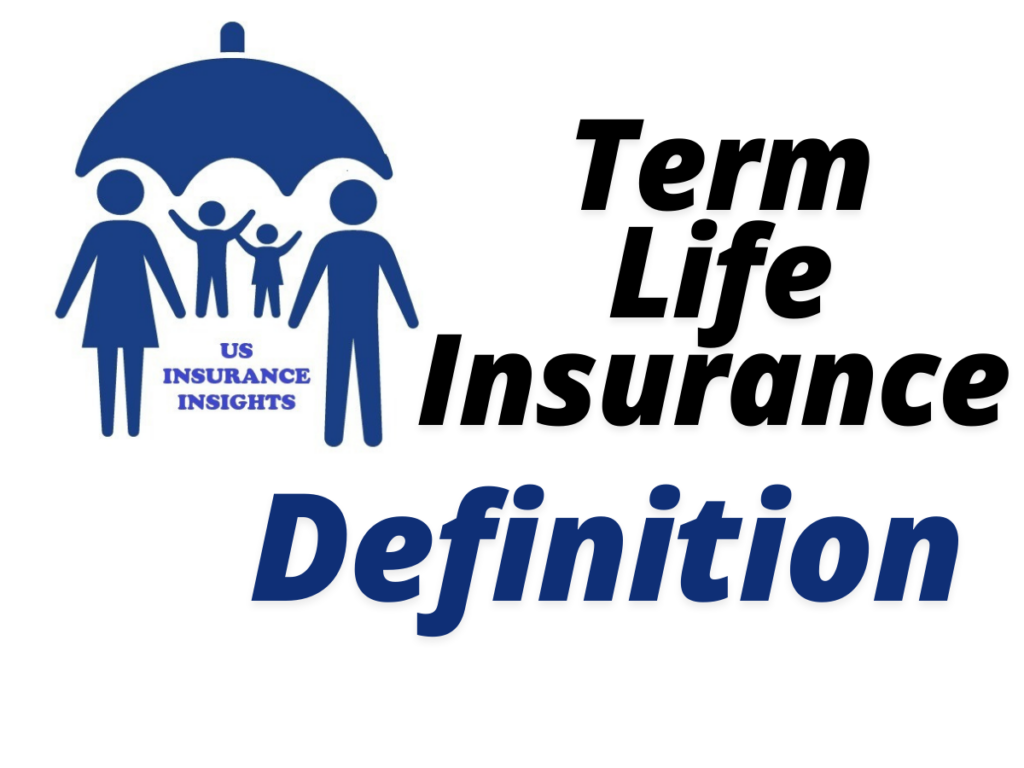Term Life Insurance A Comprehensive When it comes to protecting your loved ones’ financial future, life insurance often comes up as a reliable solution. Among the many types of life insurance, term life insurance stands out for its simplicity, affordability, and targeted coverage. But what exactly does term life insurance mean? In this article, we’ll explore the term life insurance definition, its key features, benefits, and why it could be the ideal choice for your needs.
What Is the Definition of Term Life Insurance?
Term life insurance is a type of life insurance policy that provides coverage for a specified period, or “term.” If the policyholder passes away during this term, the insurer pays out a pre-determined death benefit to the beneficiaries. Unlike whole life or universal life insurance, term life insurance does not accumulate cash value or include investment components. Instead, it focuses solely on providing financial security during critical periods of your life. Term Life Insurance A Comprehensive
For example, term life insurance policy ensures that your family receives financial support if you pass away within that 20-year period. However, once the term expires, the coverage ends unless you choose to renew or convert the policy.
Term Life Insurance A Comprehensive
1. Fixed Coverage Period
Term life insurance policies typically last for 10, 20, or 30 years. You can choose a term length that aligns with your financial goals and responsibilities. Term Life Insurance A Comprehensive
2. Guaranteed Death Benefit
The death benefit, which is the amount paid to your beneficiaries, remains fixed throughout the term. This ensures stability and predictability for your loved ones. Term Life Insurance A Comprehensive
3. Affordable Premiums
Since term life insurance doesn’t include cash value or investment options, it’s generally more affordable than permanent life insurance. Term Life Insurance A Comprehensive
4. No Cash Value
Unlike whole life insurance, term life insurance does not build cash value over time. Its sole purpose is to provide financial protection.
Types of Term Life Insurance
Understanding the different types of term life insurance can help you make an informed choice:
1. Level Term Life Insurance
The most common type of term life insurance. Term Life Insurance A Comprehensive
Premiums and the death benefit remain consistent throughout the policy term. Term Life Insurance A Comprehensive
2. Decreasing Term Life Insurance
The death benefit decreases over time, often used to cover loans or mortgages.
Premiums usually remain level, despite the declining benefit. Term Life Insurance A Comprehensive
3. Renewable Term Life Insurance
Allows you to renew the policy at the end of the term without undergoing a medical exam.
Premiums may increase with each renewal due to age. Term Life Insurance A Comprehensive
4. Convertible Term Life Insurance
Provides the option to convert your term policy into a permanent policy, such as whole life insurance.
Conversion can typically be done without a medical exam.
Who Should Consider Term Life Insurance?
1. Young Families
Term life insurance is ideal for families with young children. It ensures financial support for everyday expenses, childcare, and education in the event of a parent’s untimely death. Term Life Insurance A Comprehensive
2. Homeowners
If you have a mortgage, term life insurance can help pay off the remaining balance, preventing your loved ones from losing their home. Term Life Insurance A Comprehensive
3. Business Owners
Term life insurance can be used to cover business loans or provide continuity in the event of a key owner’s passing.
4. Individuals With Specific Financial Goals
Whether it’s covering college tuition or replacing lost income, term life insurance is a cost-effective way to achieve targeted financial goals.
Real-Life Example: Peace of Mind in Action
When Sarah and Tom purchased their first home, they decided to secure a 30-year term life insurance policy. Their goal was simple: ensure the mortgage would be paid off if anything happened to either of them. Tragically, Tom passed away in an accident seven years later. Because of their term life policy, Sarah was able to pay off the mortgage and provide financial stability for their two children. This example illustrates how term life insurance offers critical protection during life’s most uncertain moments. Term Life Insurance A Comprehensive
How to Choose the Right Term Life Insurance Policy
Step 1: Term Life Insurance A Comprehensive
Start by calculating the amount of coverage you need. Consider factors like: Term Life Insurance A Comprehensive
Outstanding debts (e.g., mortgage, car loans, credit cards)
Future expenses (e.g., college tuition, medical costs)
Income replacement needs
Step 2: Term Life Insurance A Comprehensive
Choose a term that aligns with your financial obligations. For instance: Term Life Insurance A Comprehensive
A 10-year term might be suitable for short-term debts or coverage during the final years of a mortgage.
A 20- or 30-year term is better for long-term needs like raising children or paying off a large mortgage.
Step 3: Compare Providers
Not all insurance companies offer the same rates or benefits. Take time to compare quotes, customer reviews, and policy features.
Step 4: Understand Policy Options
Look for additional features, such as riders, that enhance your coverage. For example: Term Life Insurance A Comprehensive
Accelerated Death Benefit Rider: Allows you to access a portion of the death benefit if diagnosed with a terminal illness.
Waiver of Premium Rider: Term Life Insurance A Comprehensive.
Advantages and Disadvantages of Term Life Insurance
Advantages:
Affordable: Lower premiums compared to permanent life insurance.
Customizable: Choose a term length that matches your needs. Term Life Insurance A Comprehensive
High Coverage: Secure significant death benefits for a low cost.
Disadvantages:
No Cash Value: Policies do not build savings or investment components.
Temporary Coverage:Term Life Insurance A Comprehensive
Common Myths About Term Life Insurance
“It’s a Waste If You Don’t Die Within the Term.” Term Life Insurance A Comprehensive
The primary goal of term life insurance is peace of mind. Even if you outlive the term, the financial protection during critical years makes it worthwhile. Term Life Insurance A Comprehensive
“It’s Only for the Young.”
While younger individuals benefit from lower premiums, older individuals can still find value in term life insurance to cover specific needs.
Policy features, riders, and renewal terms can vary significantly among providers. Always read the fine print. Term Life Insurance A Comprehensive
Final Thoughts: Why Term Life Insurance Matters
Understanding the term life insurance definition is the first step toward making an informed decision about your financial future. Its affordability, simplicity, and flexibility make it an excellent choice for individuals and families seeking targeted protection. Term Life Insurance A Comprehensive

